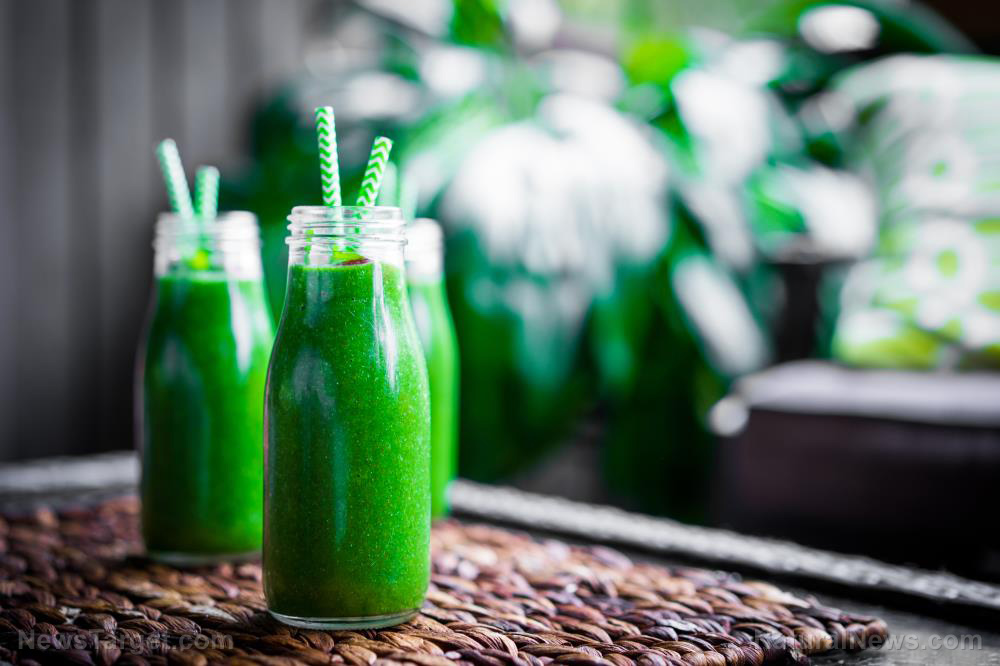
Burdock root
Try to choose roots from plants that are between two and four years old. Anything smaller than that will be too insignificant for the effort, and older roots are woody and bland. A burdock plant's age can be determined by its size. While any vinegar can be used to pickle foraged roots, try using Japanese rice vinegar to make "yamagobo" – pickled burdock root marinated in a mixture of rice vinegar, sugar and salt. Tangy, sweet and refreshingly crunchy, yamagobo is incredibly easy to make and great as an accompaniment to sushi rolls or rice meals. Simply put rice vinegar, sugar, salt, water and food coloring in a saucepan, then heat until the sugar and salt are completely melted. Let the mixture cool down. In the meantime, add the cut gobo (burdock) sticks into a container or mason jar. Add the marinade, cover with the lid and place it in the refrigerator. It's ready after three days, but you can store it in the refrigerator for up to one month.Cattail hearts
Young cattail hearts taste quite a bit like asparagus when steamed, and also take on other flavors easily – making them ideal to forage and pickle. Harvest a big bunch of shoots, and cut them into pieces that will fit comfortably into mason jars. Then remove the outer skin, leaving just the white/pale green heart intact. Drop a couple of garlic cloves into each jar, along with a generous sprig of fresh dill and about 1/2 a teaspoon of pickling spice. Add the cattail hearts until they've packed the jar, putting in smaller chunks to fill any spaces. Bring a vinegar-water mixture to a boil, with either salt or salt and sugar added to taste. Pour this into the jars, and slop around in there with a chopstick to release any air bubbles. Then cap and seal them, and process in a boiling water bath for 10 minutes. (Related: Edibles in plain sight: 15 Common wild plants that are safe to eat.)Dandelion bud capers
Harvest dandelion buds when they've just appeared above the basal rosette leaves. They'll be small and densely packed. Harvest about two cups' worth if possible, rinse them and drain them well. Mix 2/3 cups vinegar with 1/3 cup water and about one teaspoon of sea salt in a saucepan. Transfer the buds into a clean, sterilized jar and bring the vinegar mixture to a boil. Pour the boiling liquid into the jar, leaving half an inch of headspace, then seal. Process in a water bath for 10-15 minutes.Spruce tips
Spruce tips provide a bright, lemony flavor that remains intact when pickled. It can be complemented by different spices added in to the brining mixture. Spruce tips often appear in early springtime as tender, soft and bristly tips – best harvest and preserve them. Ingredients:- 1 cup apple cider vinegar
- 3 tbsp honey
- ½ tsp salt
- 1/2 tsp ground black pepper
- ¼ cup water
- 2 cups spruce tips, rinsed well
- In a small saucepan, add vinegar, honey, salt, pepper and water and, over high heat, bring to a boil.
- In a 500 ml mason jar, pack the spruce tips well. Once the brine reaches a boil, carefully pour it into a mason jar over the spruce tips.
- Leave the jar to cool (stir 3 or 4 times to ensure all spruce tips are submerged in the hot brine).
- Once it's cool, cover the jar with a lid and store it in the fridge indefinitely.
Wild mushrooms
Foraged mushrooms that aren't poisonous can also be preserved for future use. Chanterelles, morels and chicken of the woods are great when pickled. They often go well with game fowl like partridge, grouse and wild turkey. Only use young mushrooms for conserves and pickles, small tight buttons will yield the highest quality product. Larger, more mature mushrooms are better dried. However, be warned that adding too much herbs, spices and garlic to the pickling liquid for the mushrooms could make them taste like medicine. Ingredients:- Scant 2 lbs small young mushroom buttons. 28-30 oz will fit a quart jar
- Chanterelle buttons
- 3 cloves (7 grams) garlic, thinly sliced
- ½ cup flavorless oil for sauteeing
- 1 teaspoon (5 grams) of kosher salt a generous teaspoon
- ¾ cup water
- ½ cup rice wine vinegar (white wine vinegar can also be used, but it will have a stronger flavor)
- 2 teaspoons fresh chopped thyme
- 1 bay leaf (can either be dried or fresh)
- Clean mushrooms by swishing them quickly in cold water to ensure they'll have liquid to give up when heated. Transfer the mushrooms to a tray lined with a few paper towels and allow them to rest and release some liquid. Ideally, the mushrooms should be refrigerated overnight so they dry out a bit.
- In a wide pan with high sides or a soup pot, gently heat the oil and the sliced garlic slowly on medium heat until the garlic begins to turn golden. While a more intense color on the garlic will yield a better-tasting preserve, avoid burning the garlic.
- When the garlic is perfectly golden, add the mushrooms, salt and herbs, stir so the salt can help draw out the mushroom liquid, then cover the pan, cooking on medium heat, and allow the mushrooms to give up their juice and halt the cooking of the garlic. The mushrooms should give off a good amount of water.
- Once the mushrooms have wilted and given up their juice, add the water and vinegar. Bring the mixture to a rolling boil.
- Finally, put the mushrooms in a quart jar and pack them down. Pour the boiling liquid over the mushrooms. Wiggle a chopstick around in the jar to get out air pockets, adding extra pickling liquid as needed.
- From here the mushrooms can be stored in the fridge and will last for months as long as they're kept under their liquid.
- For water bath canning, leave a half-inch headspace at the top. Depending on the size of the mushrooms, a little pickle liquid and some mushrooms will remain.
- Press the mushrooms down to make sure they are completely covered with liquid. Add a little oil to cover if they threaten to pop up, then screw on the lid. Process the jars in a water bath like regular cucumber pickles: 10 minutes for pints, 15 minutes for quarts.
- Store opened jars in the fridge.
More related stories:
Here’s a handy guide to safely foraging for wild edibles. Foraging wild edibles: Berry basics to help identify what’s safe and what isn’t. Why you should learn about herbs i your area: Wild edibles and medicinal plants can offer food security. Sources include: MorningChores.com Brighteon.comVideo: Trump promises “final battle” to “demolish the deep state”
By News Editors // Share
The censorship hegemon must be stopped
By News Editors // Share
Enjoy that cup of joe: Here are some science-backed health benefits of CAFFEINE
By Olivia Cook // Share
Support brain health with lutein, a brain-boosting carotenoid
By Zoey Sky // Share
Poll: Americans don’t want a central bank digital currency
By News Editors // Share
The childhood crisis: How modern life is wiring kids for anxiety
By willowt // Share
Minnesota's abortion data gap: A troubling omission
By bellecarter // Share
Russia condemns U.S. intervention in Venezuela, backs new interim leader
By bellecarter // Share
U.K. prepares post-Brexit reset bill allowing automatic alignment with EU rules
By lauraharris // Share











